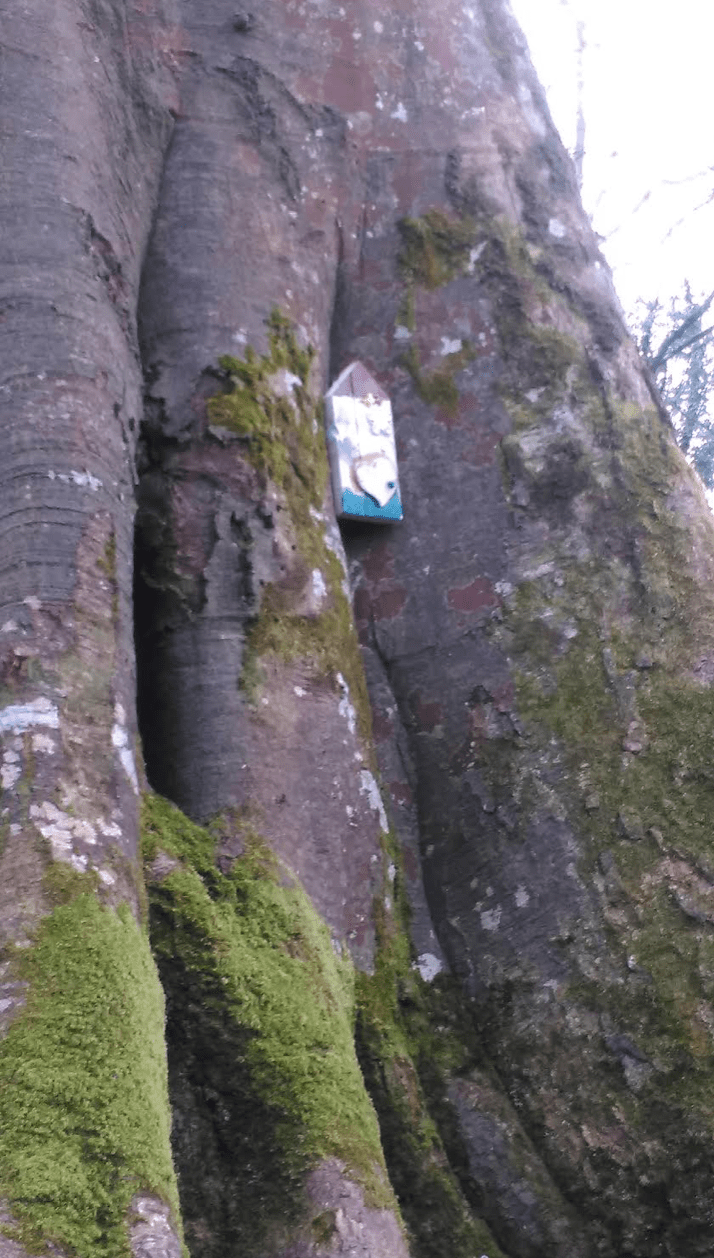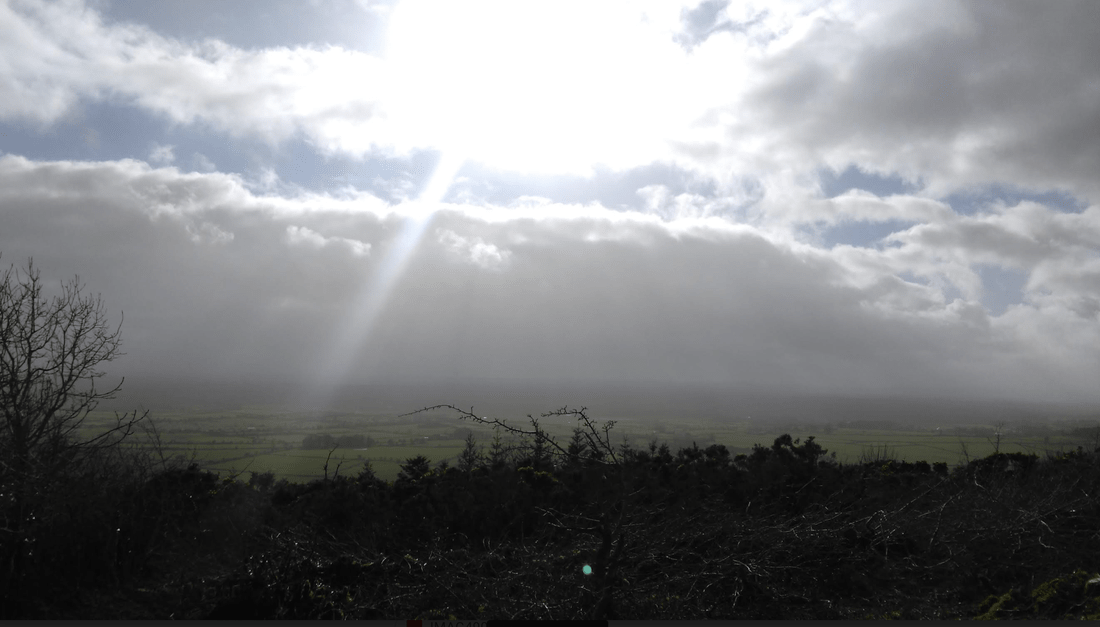Opening scene
For this opening scene, I invite you to step briefly into someone’s shoes. Imagine that you are hit one morning by a wave of depression. You wake up and you feel it’s heaviness descend with the low pressure of a damp and dreary Winter’s day. Weariness seeps into the very bones of you. A cocoon of numb wraps around you like a freezing fog. Movement becomes hard as your body became leaden. You make it from your bedroom only to mould yourself into the sofa. Deep down some sadness is buried at the bottom of your chest. You sink deeper, separated from the rest of life that’s happening at a distance, above the surface, as you watch quietly from these cold, frozen and lonely depths.
Pause. Stop the film.
Now, imagine that two different doors are opening in front of this person. Through the first door, we see her continuing like this for several days. She can’t shake this awful feeling, she feels helpless. Eventually, she goes to see his GP, who tells her that she has a mood disorder, caused by changes in his brain chemistry and hormones. It was probably inherited from her father who also has depression, so not much can be done. The doctor recommends that she takes anti-depressant drugs to change the chemistry in her brain back to a normal level. Just to get her over this bad patch. There are side effects, yes, but nothing serious. She takes the tablets, for a few months to start with. But over time, she finds that he can’t manage life without them. Over time, her liver becomes affected, and she has to take more drugs to deal with the effects of the first ones. Over time, life becomes bearable, but monotone, cast in grey tones, never in full colour.
Let’s close the door gently on this scene, and turn towards door two.
Door two
As she lies on the sofa, feeling frozen, she tunes in to herself, and acknowledges how she is feeling. She says to herself, “numb, heavy, sad, this is how I am feeling right now”. She tries to embrace it, and even though it’s hard, she doesn’t push it away. Her housemate comes out of his bedroom, he walks about the kitchen talking, but she can’t fully listen or respond. She tells him. “ I feel low, and really sad”. He responds kindly, joins her on the sofa, wraps his arms around her, and asks her gentle questions about how she is feeling. She tells him the back story to these feelings, the loneliness, the grief, which has built up over the past weeks. She cries then, and he just holds her. A wave passes through her, and she feels relief. Her heart opens to him now, and she asks him, how are you? He speaks of his own loneliness, of how he also has struggled, and together they hold one another in their loneliness, tenderly and sweetly. Soon they begin to squeeze some humour into the conversation, and laughter follows tears.
Then, as she listens within, an inner voice tells her that she needs to move, to get outside into wild nature, to see beauty. She drives to Knockma, a hill connected with Queen Maeve of Irish legend, not too far away. Rich in myth and legend, it also gives a vista for miles around, to Connemara and the 12 Bens, over to Lough Corrib, and as far as Galway. It is thought to be the burial place of Queen Maeve, who according to legend, drank deeply from the sensual world, who was enchanted and intoxicated by life.


She walks, and even though the dragging feeling is still there, she feels enlivened and awakened through her senses. The air caresses the skin on her face, the rhythm of her feet on ground reassures her, and her eyes take in the beauty of natural forms around her. Soft moss, curved hill, tall trees, sunlight piercing through the clouded day. All infuse her senses and begin to weave a spell around her. She keeps walking, feeling some heat arrive through her muscles to melt the frozen places.
As she walks, she remembers a story she read recently, the story of Prometheus, the archetypal Greek figure who sacrifices something in his life for a greater cause. She contemplates this as she walks, and realises that she resonates with this figure, that somehow it might explain this phase of her life. By connecting to an archetype, her sadness can now be housed in the great mythical stories that speak of the perennial struggles and triumphs of humanity. Another part of her eases.

She then plays with the sight of fairy doors that have been placed for children throughout the forest. As she walks, and as nature weaves its spell from within and around her, she thinks how we too can travel through portals of our consciousness to access different, more enchanted states. She reaches the top of the hill now, and sees the vista all around her, the light that beams through the clouds to create a glistening across the land that stands in contrast to the dull and the grey hues. She turns now and makes her way homeward. She finishes the day by bathing in warm salt water to soothe any last stresses in her body, and meets her friends later that night; they talk, and dance. Her senses have been filled, her heart opened, and her mind enlarged; her mood is now transformed. The heavy clouds have shifted into a skyscape that is an interplay of both light and shadow. This is not an escape to bliss, nor a drowning in sorrow, but a place where all can co-exist, entering into a transformative communing together.
A true story
These two scenes draw on two very real life situations that I have experienced over the years. The first doorway, the medical response, is the doorway that I took many years ago when struggling as a student in Belfast. It is the doorway that my father, who was also diagnosed over 40 years ago as having depression, still lives through.
The second doorway is the one which has opened through many years of healing and deep diving into the soul. Through this doorway, depression is not seen as a disorder, caused by an imbalance of the chemicals in the brain, but a call of the soul to care take a grief, a loss, an emptiness. The cure here is not medical, through pharmaceutical drugs, but soulful; connecting with oneself on the deepest of levels, human kindness and compassion, finding a re-enchantment with life by connecting with the beyond human worlds of nature, myth and mystery, all weave a cloak that wraps around you.
Through taking this doorway, all parts of the self are re-membered and restored. The body is soothed, the heart opened, the soul re-enchanted. It allows a re-connection back into the world that is filled with richness and possibility. The medical model is what most of us are literally sold as the way through ( and helps many, and that I would not take away from any one who has no other choice). However, it is only in very recent times that humanity has stripped away the soul and reduced life down to its biomedical parts. Throughout human history, from the Ancient Greeks to the Celts, the Native Americans to the Aborigines, the healing and re-enchanting of the soul has cured the ailing ones. In this wisdom, you might be asked, when did someone last hold you, and speak to you kindly? What loss have you endured, and what emotion needs to flow through you? When were you last enchanted by nature? What wisdom have the great myths and legends to teach you, to help to guide you through?
With figures revealing that Ireland has the highest rate of depression of any European country, the medical model clearly cannot speak to the sickness of the soul. Perhaps it calls for attention, for love, for holding, for communing, in ways that can re-enchant our souls once again, as a part of the greater Anima Mundi, or soul of the world.



